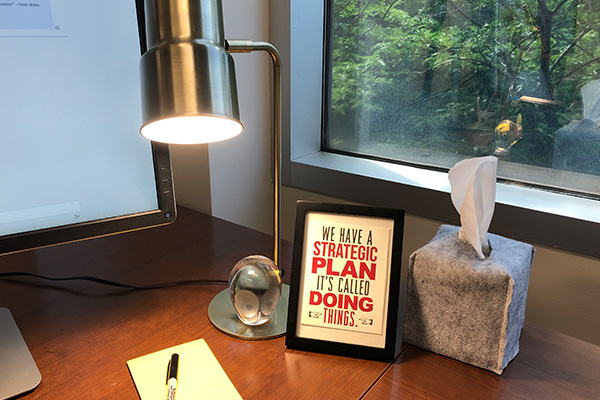Connecting Learning to Action: 5 Next Steps from ACMP Global Connect
July 6, 2022

By: Diane Knoepke
I have a card on my desk that reads, “We have a strategic plan. It’s called doing things.” It’s one way I remind myself how essential our bias toward meaningful action is to doing learning and change work. In sitting down to reflect and recap my great experiences during last week’s ACMP Global Connect 2022, I am sharing five ways of being—and doing—that I will carry forward in my practice as a change leader.
- Seek “maniacal clarity.” As Erica Dhawan shared in the Opening Keynote session, “clarity is the new empathy.” No matter what change we are designing, leading, or supporting, we can always communicate more clearly and carefully with our collaborators. We can remind ourselves that seeking clarity is a generous act, even when it feels tedious.
- Intentionally “breach the psychological contract” to drive DEI change. In sharing their research findings, Tyece Wilkins and Victoria Grady discussed the need for leaders to focus more acutely on racial equity in their teams and organizations. Doing so is a shift for most, as the status quo has held leaders and managers back from “going there” in corporate dialogue. We take a similar approach in our DEIJ (adding social and organizational “Justice”) curricula in our Northwestern MSLOC graduate and ELOC executive education programs, equipping leaders to challenge the status quo with equity mindedness.
- Say it, so you can solve it. Further activating the findings Wilkins and Grady shared, Faith Eatman started discussing actions to promote workplace equity with a powerful mantra, “if you can’t say it, you can’t solve it.” Eatman’s “NICE” acronym lays out clear steps for organizational and systemic transformation, grounded in honest diagnosis: a) Name your pain (diagnose what's really happening); b) Investigate (gather data, collect stories); c) get Curious (discovery, problem definition, 5 whys); and d) Evolve to greater (prototyping, continuous learning).
- Get curious about emotions to accelerate change. Alison Coates encouraged us to view our collaborators’ behaviors as productive and unproductive, rather than positive and negative, as they relate to change efforts. Rather than distracting ourselves from the goal by judging others’ emotions, we need to get genuinely curious about what is driving unproductive behaviors so we can work with them.
- Get curious about curiosity itself. We heard from Northwestern MSLOC alumna Frances Poe (MS22) sharing her award-winning Capstone research on the relationships of curiosity and work design with work engagement. We are neither sufficiently curious nor clear about curiosity at work. A lot of job descriptions mention curiosity as a characteristic in ideal candidates, but what do they mean? Curious about what? Curious how? And when we’re working with others and are tempted to judge them as “not curious,” what if we instead worked to recognize their curiosity style, which may be different than ours?
Thank you to all the presenters and organizers, mentioned here and not, for your work to gather our global change management community in shared learning and mutual connection.
Photo credit: Diane Knoepke. Card made by The Permanent Collection Letterpress + Design Studio (@thepcpress).